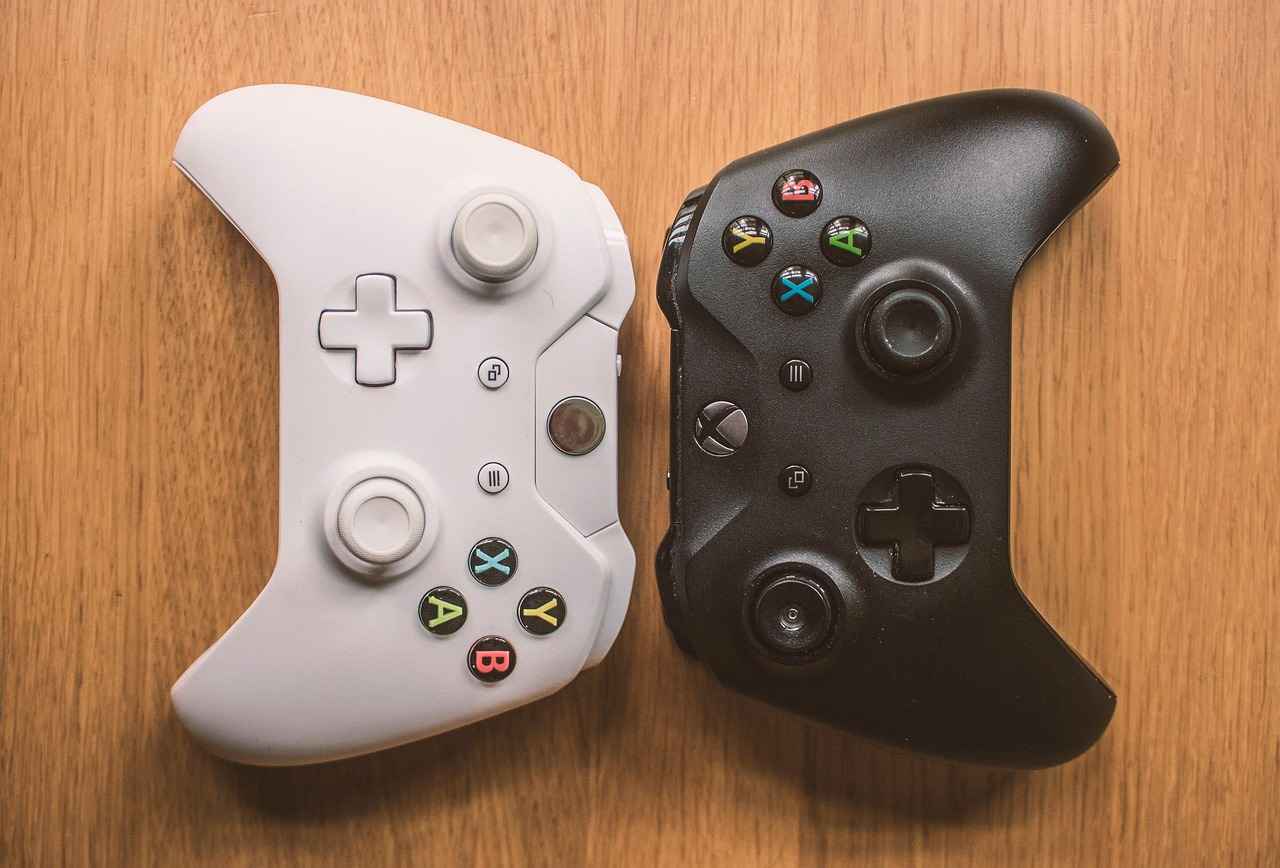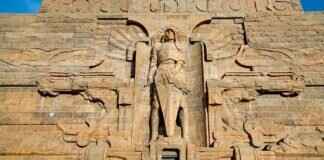This article delves into the various game modes of Blooket, providing educators with insights to select the most suitable options for their classrooms and enhance student engagement through interactive learning. Blooket is an innovative educational platform that combines gaming with learning, allowing teachers to create quizzes and games that captivate students’ attention while reinforcing essential knowledge.
What is Blooket?
Blooket is a dynamic educational tool designed to make learning fun and interactive. By merging gaming mechanics with educational content, it allows teachers to create customized quizzes that can be played in various formats. This platform encourages active participation from students, making learning an enjoyable experience. Teachers can create a variety of question types, from multiple-choice to true/false, ensuring that they can cater to different learning styles and preferences.
How to Get Started with Blooket
To effectively utilize Blooket, educators must first set up an account. The process is straightforward and user-friendly. Once registered, teachers can create their first game by following these simple steps:
- Log in to your Blooket account.
- Select the option to create a new game.
- Choose a game mode that fits your lesson objectives.
- Input your questions and answers.
- Share the game code with your students and start playing!
Understanding Blooket Game Modes
Blooket offers a variety of game modes, each tailored to different educational needs. Understanding these modes is crucial for educators aiming to enhance student engagement. Here’s a breakdown of some popular game modes:
Classic Mode: A Traditional Approach
Classic Mode is a straightforward format reminiscent of traditional quiz games. This mode is particularly beneficial for reinforcing knowledge in a familiar environment. It encourages students to compete against each other, fostering a sense of achievement and motivation.
Benefits of Classic Mode
The primary advantage of Classic Mode is its ability to create a comfortable atmosphere for students. This familiarity enhances participation and helps in knowledge retention. Additionally, the competitive element can drive students to perform better, making it an effective tool for review sessions.
When to Use Classic Mode
Classic Mode is ideal for quick assessments or revision sessions. Teachers might consider using it when introducing new topics or wrapping up a unit to gauge student understanding effectively.
Team Mode: Collaboration at Its Best
Team Mode shifts the focus from individual competition to collaboration. This format encourages students to work together, fostering teamwork and communication skills.
Advantages of Team Mode
The collaborative nature of Team Mode promotes peer learning, where students can support each other in grasping difficult concepts. This mode is especially effective in classrooms where social interaction enhances learning outcomes.
Strategies for Effective Team Mode Implementation
To maximize the benefits of Team Mode, educators should group students strategically based on their strengths and weaknesses. This ensures balanced teams that can support each other effectively.
Match Game: Fast-Paced Learning
The Match Game mode is designed for quick thinking and rapid recall. Students are challenged to match questions with answers in a race against time, making it an exciting way to reinforce knowledge.
Why Choose Match Game for Your Class?
Match Game is particularly effective for reviewing material in a lively manner. It energizes students and helps reinforce concepts through quick recall, making it an excellent choice for revision sessions.
Best Practices for Using Match Game
To ensure a successful Match Game experience, educators should provide clear instructions and set a positive tone. Incorporating rewards for high-performing teams can also enhance motivation and engagement.
Tower Defense: Engaging Learning Through Strategy
Tower Defense mode combines strategic gameplay with educational content. Students must apply their knowledge to protect their towers, making learning both fun and interactive.
Benefits of Tower Defense Mode
This mode engages students by integrating gameplay with cognitive challenges. It encourages them to think critically and strategically, enhancing their problem-solving skills in a fun environment.
Implementing Tower Defense in Lessons
Teachers can effectively incorporate Tower Defense into their lessons by aligning it with specific curricular goals. This ensures that while students are having fun, they are also meeting educational objectives.
Choosing the Right Game Mode for Your Class
Selecting the most suitable Blooket game mode depends on various factors, including learning objectives, class dynamics, and student preferences. Educators should assess their classroom environment and align game modes with desired learning outcomes.
Assessing Class Dynamics
Understanding the dynamics of your classroom is crucial for choosing the right game mode. Teachers should consider student engagement levels and preferences when selecting a game format.
Aligning Game Modes with Learning Goals
To enhance educational outcomes, it is essential to align game modes with specific learning goals. This strategic planning can help educators maximize the potential of Blooket in their teaching practices.

What is Blooket?
Blooket is a revolutionary educational platform that integrates the excitement of gaming with the rigors of learning. Designed primarily for teachers and educators, Blooket allows for the creation of custom quizzes and games that not only make learning enjoyable but also foster an interactive classroom environment. This innovative approach is rapidly gaining popularity in schools, as it transforms traditional learning methods into engaging experiences that captivate students’ attention.
The core purpose of Blooket is to enhance student engagement through gamification. By incorporating game elements into educational content, Blooket motivates students to participate actively in their learning journey. This platform is particularly beneficial in a classroom setting, as it encourages collaboration, competition, and critical thinking among students. The interactive nature of Blooket allows teachers to assess student understanding in real-time, providing immediate feedback that can inform future instruction.
One of the standout features of Blooket is its versatility. Teachers can create a variety of game types, including trivia, matching, and even strategy-based games, catering to different learning styles and preferences. This adaptability ensures that all students, regardless of their individual learning needs, can find a game mode that resonates with them. For instance, visual learners might thrive in a matching game, while analytical thinkers may prefer a strategy-based approach.
Moreover, Blooket fosters a sense of community within the classroom. As students work together in teams or compete against each other, they build camaraderie and develop essential social skills. This collaborative environment not only enhances learning but also makes the classroom a more enjoyable place to be. Teachers have reported increased participation and enthusiasm from students when using Blooket, indicating its effectiveness in promoting a positive learning atmosphere.
In addition to enhancing classroom interaction, Blooket also provides valuable data analytics for teachers. Educators can track student progress, identify areas where students may be struggling, and adjust their teaching strategies accordingly. This data-driven approach allows for more personalized learning experiences, ensuring that each student receives the support they need to succeed.
In summary, Blooket is more than just a quiz platform; it is a comprehensive educational tool that encourages active participation, collaboration, and critical thinking. By leveraging the power of gaming, Blooket transforms the learning experience, making it more interactive and enjoyable for students. As educators continue to seek innovative ways to engage their students, platforms like Blooket will undoubtedly play a crucial role in shaping the future of education.

How to Get Started with Blooket
To effectively leverage the educational platform Blooket, educators must first establish an account and create their initial game. This guide presents a comprehensive, step-by-step approach tailored for beginners, ensuring a smooth entry into the world of interactive learning.
- Step 1: Creating Your Blooket Account
- Visit the Blooket website.
- Click on the Sign Up button located at the top right corner.
- Choose to sign up using your email or through Google.
- Fill in the required information and confirm your email address to activate your account.
- Step 2: Navigating the Dashboard
- Once logged in, familiarize yourself with the dashboard.
- Explore various options such as Create a Set, Host a Game, and Explore.
- Take note of the Library where you can access pre-made sets and games created by other educators.
- Step 3: Creating Your First Game
- Click on the Create a Set button to start building your game.
- Input your game title and description to provide context for your students.
- Add questions and answers, ensuring clarity and alignment with your learning objectives.
- Utilize the Preview feature to see how your game will appear to students.
- Step 4: Selecting a Game Mode
- Blooket offers various game modes such as Classic, Team, Match, and Tower Defense.
- Choose a mode that aligns with your teaching goals and the dynamics of your classroom.
- Consider factors like student engagement and the subject matter when making your selection.
- Step 5: Hosting Your Game
- Once your game is ready, click on Host a Game.
- Select your preferred game mode and share the game code with your students.
- Encourage students to join on their devices, ensuring they understand the rules and objectives.
- Step 6: Monitoring Progress and Engagement
- As the game progresses, monitor student performance through the Blooket dashboard.
- Utilize insights gained from the game to inform your teaching strategies and address knowledge gaps.
- Encourage discussions around the game content to reinforce learning outcomes.
By following these steps, educators can seamlessly integrate Blooket into their teaching practices, fostering an environment that promotes active learning and student engagement. With its user-friendly interface and diverse game modes, Blooket serves as a valuable tool for enhancing educational experiences in the classroom.

Understanding Blooket Game Modes
Blooket is revolutionizing the way educators engage students through interactive learning experiences. One of the platform’s standout features is its variety of game modes, each tailored to meet diverse learning styles and classroom dynamics. Understanding these modes is essential for educators aiming to maximize student participation and learning outcomes. In this section, we will explore the different game modes offered by Blooket and highlight their unique features.
Blooket provides a range of game modes that cater to different educational objectives and student preferences. Each mode offers a unique approach to learning, making it easier for teachers to find the right fit for their classroom environment. Below is a breakdown of the primary game modes available:
- Classic Mode: This mode resembles traditional quiz formats, making it familiar and comfortable for students. It is ideal for quick assessments and review sessions.
- Team Mode: Encouraging collaboration, this mode allows students to work in groups, fostering teamwork and enhancing communication skills.
- Match Game: A fast-paced option that challenges students to match terms with their definitions or answers quickly. This mode is excellent for reinforcing knowledge through rapid recall.
- Tower Defense Mode: This game combines strategic thinking with educational content, allowing students to apply their knowledge in a fun, interactive way while defending against challenges.
Each game mode in Blooket is designed with specific features that enhance the learning experience:
| Game Mode | Key Features |
|---|---|
| Classic Mode | Simple interface, familiar quiz format, individual competition. |
| Team Mode | Collaboration-focused, promotes peer learning, encourages communication. |
| Match Game | Fast-paced matching, quick recall, energizes students. |
| Tower Defense Mode | Strategic gameplay, integrates learning with fun, promotes critical thinking. |
Incorporating Blooket’s game modes into classroom instruction offers numerous benefits:
- Increased Engagement: Game modes make learning more enjoyable, capturing students’ attention and motivating them to participate.
- Diverse Learning Opportunities: Different modes cater to various learning styles, ensuring that every student can benefit from the educational experience.
- Immediate Feedback: Students receive instant feedback on their performance, allowing them to identify areas for improvement.
- Enhanced Retention: The interactive nature of the games helps reinforce knowledge, making it easier for students to remember key concepts.
By understanding and effectively utilizing the various game modes offered by Blooket, educators can create a more dynamic and inclusive learning environment. This not only enhances student engagement but also fosters a deeper understanding of the material.

Classic Mode: A Traditional Approach
Classic Mode is one of the most straightforward formats in Blooket, resembling traditional quiz games. This mode provides a familiar and comfortable environment for students, making it an excellent choice for educators looking to engage their classes in a meaningful way. By incorporating elements of competition and collaboration, Classic Mode enhances knowledge retention and encourages active participation.
Benefits of Classic Mode
- Familiarity: Students are often accustomed to traditional quiz formats, which can reduce anxiety and improve engagement levels.
- Active Participation: The competitive nature of Classic Mode motivates students to participate actively, as they are eager to answer questions and earn points.
- Knowledge Retention: The repetition of questions and answers in a game format helps reinforce learning, making it easier for students to retain information.
- Immediate Feedback: Students receive instant feedback on their answers, allowing them to understand their mistakes and learn from them in real-time.
When to Use Classic Mode
Understanding when to implement Classic Mode is crucial for maximizing its effectiveness. Here are some ideal scenarios:
- Review Sessions: Classic Mode is perfect for reviewing material before exams or assessments, as it helps reinforce key concepts in an engaging manner.
- Introduction of New Topics: Use Classic Mode to introduce new subjects, allowing students to gauge their prior knowledge and set the stage for deeper exploration.
- Group Activities: This mode can be used in group settings, encouraging collaboration among students as they work together to answer questions.
- Homework Reinforcement: Assign Classic Mode games as homework to reinforce lessons learned in class, providing students with an enjoyable way to study.
Tips for Effective Use of Classic Mode
To maximize the benefits of Classic Mode, consider the following strategies:
- Customization: Tailor the questions to fit your curriculum and the specific needs of your students, ensuring relevance and engagement.
- Encourage Team Play: Allow students to work in teams, fostering collaboration and communication while making the game more enjoyable.
- Incorporate Rewards: Use incentives, such as small prizes or recognition, to motivate students and enhance competition.
- Reflect on Performance: After the game, discuss the results with the class, highlighting areas of strength and opportunities for improvement.
In conclusion, Classic Mode in Blooket serves as an effective tool for educators aiming to create an interactive and engaging learning environment. By leveraging its benefits and implementing it strategically, teachers can enhance student participation and knowledge retention, ultimately leading to improved educational outcomes.
Benefits of Classic Mode
Classic Mode in Blooket is a time-honored approach to learning that resonates well with students. This mode creates a familiar environment that significantly enhances students’ comfort levels and encourages active participation. By mimicking traditional quiz formats, Classic Mode allows students to engage with the material in a way that feels both accessible and inviting.
One of the key benefits of Classic Mode is its ability to foster a sense of competition among students. When students compete against one another, it ignites a natural drive to perform better, which can lead to improved knowledge retention. This competitive spirit not only makes learning more enjoyable but also encourages students to engage more deeply with the content being presented. As they strive to outperform their peers, they are more likely to absorb information and recall it when needed.
Moreover, Classic Mode is particularly effective in reinforcing conceptual understanding. By presenting questions in a straightforward format, students can focus on the core material without the distractions that more complex game modes might introduce. This clarity allows them to concentrate on answering questions correctly, which in turn solidifies their grasp of the subject matter.
Another significant advantage of Classic Mode is its versatility. It can be implemented in various subjects and adapted to different educational levels. Whether it’s for reviewing vocabulary in a language class or testing knowledge in a science lesson, Classic Mode provides a solid framework that teachers can utilize across the curriculum. This adaptability makes it easy for educators to tailor the game to suit their specific teaching objectives.
In addition, Classic Mode encourages collaboration and discussion among students. As they participate in the game, students often share insights and reasoning behind their answers. This collaborative atmosphere not only enhances learning but also builds a sense of community within the classroom. Students learn from one another, which can lead to a deeper understanding of the material.
Furthermore, Classic Mode can serve as a valuable assessment tool for educators. By observing how students perform in this mode, teachers can gauge their understanding of the material and identify areas where additional instruction may be necessary. This feedback loop is crucial for effective teaching, as it allows educators to adjust their methods based on real-time data.
In conclusion, the benefits of Classic Mode in Blooket are numerous. From fostering a competitive spirit that enhances knowledge retention to providing a versatile framework for various subjects, this mode stands out as an effective educational tool. By creating an environment that promotes comfort and participation, Classic Mode not only engages students but also enriches their learning experience.
When to Use Classic Mode
Understanding when to implement Classic Mode in Blooket is essential for maximizing its effectiveness in the classroom. This game style is designed to resemble traditional quiz formats, making it a familiar and comfortable option for students. Here, we will explore the best times to utilize Classic Mode, ensuring that educators can harness its full potential to enhance learning.
One of the most effective times to use Classic Mode is during review sessions. When students are preparing for exams or assessments, this mode provides a straightforward way to reinforce previously learned material. By engaging in a quiz format, students can test their knowledge in a low-pressure environment, which can significantly boost their confidence and retention of the subject matter.
Another ideal scenario for implementing Classic Mode is at the beginning of a new unit. This approach allows teachers to gauge students’ prior knowledge and understanding of the upcoming topics. By asking questions related to the new content, educators can identify gaps in knowledge and adjust their teaching strategies accordingly. This pre-assessment not only informs instruction but also primes students for the new material.
Additionally, Classic Mode is particularly beneficial for individual learning. In classrooms where students have varying levels of understanding, Classic Mode allows each student to progress at their own pace. This personalized approach can be especially helpful for students who may feel intimidated in more competitive or collaborative settings. By focusing on their own answers, students can build their confidence without the pressure of competing against peers.
Moreover, Classic Mode can be effectively used as a formative assessment tool. Teachers can utilize the data gathered from the game to assess overall class performance and individual student understanding. This feedback is invaluable for adjusting lesson plans and providing targeted support to students who may be struggling. By analyzing the results, educators can identify trends and areas of concern, ensuring that all students receive the necessary attention to succeed.
Finally, Classic Mode is perfect for creating a fun and engaging atmosphere in the classroom. By incorporating game elements into lessons, teachers can increase student motivation and enthusiasm for learning. The competitive nature of quizzes can spark excitement among students, encouraging them to participate actively and take ownership of their learning experience.
In conclusion, the strategic use of Classic Mode in Blooket can significantly enhance student engagement and learning outcomes. By recognizing the ideal circumstances for its implementation—such as during review sessions, as a pre-assessment, for individual learning, as a formative assessment tool, and to foster a fun classroom environment—educators can maximize the effectiveness of this game mode. Embracing Classic Mode at the right times can lead to more meaningful interactions and a deeper understanding of the material for all students.

Team Mode: Collaboration at Its Best
Team Mode in Blooket is an innovative approach that emphasizes the importance of collaboration among students. This game mode is designed to foster teamwork and enhance communication skills, which are essential for success in both academic and real-world scenarios. By engaging in Team Mode, students not only learn to work together but also develop critical social skills that will benefit them throughout their lives.
One of the primary advantages of Team Mode is that it promotes social interaction among students. When working in teams, students must communicate effectively to achieve common goals. This interaction encourages them to share ideas, negotiate solutions, and support one another, which can lead to a more cohesive classroom environment. Through this collaborative effort, students can learn from each other’s strengths and weaknesses, enhancing their overall understanding of the subject matter.
Moreover, Team Mode allows for peer learning, where students can teach and learn from their teammates. This collaborative approach can significantly improve comprehension and retention of information. When students explain concepts to their peers, they reinforce their own understanding while also helping others grasp challenging topics. This mutual support system not only boosts academic performance but also builds a sense of community within the classroom.
To implement Team Mode effectively, educators can adopt several strategies. First, it is essential to create balanced teams that mix different skill levels and personalities. This diversity can enhance collaboration as students learn to appreciate different perspectives and approaches to problem-solving. Additionally, teachers should establish clear objectives and roles within each team to ensure that every student contributes to the group’s success.
Incorporating regular feedback sessions can also be beneficial. After each game, educators can facilitate discussions about what worked well and what could be improved. This reflection allows students to identify their strengths and areas for growth, fostering a culture of continuous improvement. Furthermore, recognizing and celebrating team achievements can motivate students and reinforce the value of teamwork.
In conclusion, Team Mode in Blooket is more than just a game; it is a powerful tool for enhancing group dynamics in the classroom. By encouraging collaboration, promoting social interaction, and facilitating peer learning, this mode helps students develop essential skills that will serve them well in their academic journeys and beyond. Educators who harness the potential of Team Mode can create a more engaging and supportive learning environment that prepares students for future challenges.
Advantages of Team Mode
Team Mode in Blooket is designed to foster a collaborative learning environment that enhances student engagement and comprehension. This mode allows students to work together, promoting social interaction and peer learning, which are essential components of effective education.
- Enhanced Communication Skills: Team Mode encourages students to communicate and articulate their thoughts as they work together to solve problems. This collaborative effort helps students develop important communication skills that are vital for their future.
- Increased Engagement: By participating in team-based activities, students are more likely to stay engaged and invested in their learning process. The competitive aspect of Team Mode can motivate students to put forth their best effort.
- Peer Learning Opportunities: Students often learn best from one another. Team Mode allows for peer teaching, where more knowledgeable students can assist their peers, reinforcing their understanding while helping others.
- Building Teamwork: Working in teams helps students learn how to collaborate effectively. They can practice sharing responsibilities, negotiating roles, and working toward a common goal, which are essential skills in both academic and professional settings.
- Diverse Perspectives: Team Mode brings together students from different backgrounds and skill levels, allowing them to share diverse perspectives. This diversity can lead to richer discussions and a deeper understanding of the subject matter.
- Improved Problem-Solving Skills: Collaborating in teams often requires students to think critically and creatively to arrive at solutions. This mode encourages them to approach problems from multiple angles, enhancing their problem-solving abilities.
In addition to these advantages, Team Mode also helps create a positive classroom atmosphere. When students feel comfortable working together, they are more likely to participate actively and take risks in their learning. This environment can lead to increased confidence and a greater willingness to engage with challenging material.
Furthermore, teachers can facilitate Team Mode by implementing specific strategies, such as clearly defining roles within teams, setting achievable goals, and providing regular feedback. By doing so, educators can ensure that all students contribute to their team’s success and feel valued in the learning process.
In conclusion, Team Mode is a powerful tool for enhancing student engagement and understanding. By promoting social interaction and peer learning, it not only enriches the educational experience but also equips students with essential skills for their future endeavors.
Strategies for Effective Team Mode Implementation
To fully harness the potential of Team Mode in Blooket, educators must adopt a set of well-defined strategies. This approach not only enhances student engagement but also fosters a collaborative learning environment. Below are several practical tips to ensure successful implementation of Team Mode across various classroom settings.
- Establish Clear Objectives: Before initiating Team Mode, it is crucial to define clear learning objectives. Determine what knowledge or skills you want students to acquire through the game. This clarity helps guide the gameplay and keeps students focused on the learning outcomes.
- Group Students Strategically: Forming teams should be done thoughtfully. Consider mixing students of different skill levels to promote peer learning. This strategy encourages stronger students to help their peers, thus enhancing teamwork and communication skills.
- Encourage Role Assignment: Assigning specific roles within each team can streamline collaboration. For example, designate a team leader, a note-taker, and a timekeeper. This structure not only fosters responsibility but also ensures that all team members are engaged in the learning process.
- Provide Guidance and Support: As students engage in Team Mode, teachers should circulate the room to provide support and guidance. Address any questions or conflicts that arise, and encourage teams to collaborate effectively. This presence reinforces the importance of teamwork and helps maintain focus on the task at hand.
- Incorporate Reflection: After completing the game, facilitate a reflection session where teams can discuss their strategies, challenges, and successes. This practice encourages critical thinking and allows students to learn from each other’s experiences.
- Utilize Feedback: Gather feedback from students about their experience with Team Mode. Understanding their perspectives can help refine future implementations. Consider using surveys or class discussions to collect insights on what worked well and what could be improved.
- Integrate with Curriculum: Ensure that the content of the game aligns with the curriculum. This alignment boosts the relevance of the activity and reinforces the learning objectives. Tailoring questions to specific lessons enhances retention and understanding.
- Celebrate Achievements: Recognize and celebrate the achievements of teams, whether through verbal praise, certificates, or small rewards. Acknowledging their efforts fosters a positive classroom culture and motivates students to engage further.
Implementing these strategies can significantly enhance the effectiveness of Team Mode in Blooket. By focusing on collaboration, communication, and structured guidance, educators can create a dynamic learning environment that not only makes learning enjoyable but also cultivates essential skills among students. Emphasizing teamwork not only aids in knowledge retention but also prepares students for future collaborative endeavors in and out of the classroom.

Match Game: Fast-Paced Learning
The Match Game mode in Blooket is an exhilarating way to engage students in a fast-paced environment where they must quickly match answers to questions. This game mode is designed to promote rapid recall and enhance memory retention, making it a valuable tool for educators seeking to reinforce knowledge in an interactive manner.
One of the key strengths of the Match Game is its ability to create a sense of urgency and excitement among students. As they race against the clock, they not only enjoy the competitive aspect but also solidify their understanding of the material. This game mode is particularly effective for reviewing concepts before tests or assessments, as it encourages students to think on their feet and retrieve information from memory swiftly.
Moreover, the Match Game caters to various learning styles. Visual learners benefit from the colorful and dynamic interface, while auditory learners can engage through the sounds and prompts that accompany the gameplay. This inclusivity ensures that all students have the opportunity to participate actively, regardless of their preferred learning methods.
Another advantage of the Match Game is its adaptability. Educators can customize the questions to align with specific curriculum topics, ensuring that the content is relevant and tailored to their students’ needs. This flexibility allows teachers to address different subjects and grade levels effectively, making it a versatile addition to any classroom.
To maximize the effectiveness of the Match Game, educators should consider several best practices. First, it is essential to clearly explain the rules and objectives of the game to students. This clarity helps set expectations and enhances the overall experience. Additionally, incorporating team-based challenges can foster collaboration and communication among students, further enriching the learning environment.
Incorporating regular feedback during and after gameplay can also enhance the learning experience. Teachers can provide insights on common mistakes or highlight areas where students excelled, thereby reinforcing learning points. This feedback loop not only aids in knowledge retention but also encourages students to reflect on their performance and areas for improvement.
In conclusion, the Match Game mode in Blooket offers an engaging and effective way to reinforce knowledge through quick recall. Its fast-paced nature, adaptability, and ability to cater to diverse learning styles make it an excellent choice for educators aiming to enhance student engagement and learning outcomes. By following best practices and customizing the experience to meet the needs of their students, teachers can leverage this game mode to create a dynamic and interactive classroom environment.
Why Choose Match Game for Your Class?
The Match Game mode in Blooket is an innovative and dynamic tool that can significantly enhance the learning experience in your classroom. This game mode is designed to create an engaging atmosphere where students can actively participate and revise their knowledge in a fun and interactive way. By leveraging the fast-paced nature of the game, educators can stimulate student interest and attention, making learning not just effective but also enjoyable.
One of the primary benefits of the Match Game is its ability to promote quick recall of information. Students are challenged to match questions with their corresponding answers within a limited time, which encourages them to think on their feet. This rapid-fire format not only energizes the classroom but also reinforces previously learned concepts. As students race against the clock, they are more likely to engage with the material, leading to better retention and understanding.
Moreover, the competitive aspect of the Match Game fosters a sense of excitement among students. When they compete against their peers, it ignites a natural desire to perform better and achieve higher scores. This element of friendly competition can motivate students who may otherwise be less inclined to participate in traditional review sessions. By transforming the review process into a game, educators can effectively reduce anxiety related to assessments, allowing students to focus on learning rather than merely recalling information.
In addition to enhancing individual performance, the Match Game also encourages collaboration among students. Teachers can set up team-based matches, where students work together to match answers, promoting teamwork and communication skills. This collaborative learning approach can help students learn from one another, share insights, and develop a deeper understanding of the subject matter.
To maximize the effectiveness of the Match Game, educators should consider incorporating it into their lesson plans strategically. For instance, it can be used as a tool for reviewing material before a test or as a fun way to introduce new concepts. By aligning the game with specific learning objectives, teachers can ensure that the activity serves a clear educational purpose while still being enjoyable for students.
Furthermore, the Match Game can be adapted to suit various subjects and topics, making it a versatile tool in the classroom. Whether reviewing vocabulary in a language class, reinforcing math concepts, or revisiting historical facts, this game mode can be tailored to fit the curriculum. This adaptability allows teachers to keep their lessons fresh and engaging, catering to diverse learning styles and preferences.
In conclusion, the Match Game mode is an excellent choice for educators looking to energize their classrooms and reinforce learned concepts. Its fast-paced nature, competitive elements, and collaborative opportunities make it a powerful tool for enhancing student engagement and understanding. By implementing this innovative game mode, teachers can create a lively and effective learning environment that encourages active participation and knowledge retention.
Best Practices for Using Match Game
The Match Game mode in Blooket offers a dynamic and fast-paced way for students to engage with their learning materials. To ensure that educators can maximize the potential of this game mode, it is essential to implement certain best practices. This section outlines actionable tips that can help teachers create an effective and enjoyable Match Game experience for their students.
- Set Clear Objectives: Before starting a Match Game session, educators should define clear learning objectives. This helps students understand what they are expected to achieve through the game. For instance, if the goal is to reinforce vocabulary terms, ensure that the matching pairs reflect those terms accurately.
- Choose Appropriate Content: Select content that is relevant and appropriate for the students’ current learning stage. The questions and answers should challenge students without overwhelming them, ensuring that they remain engaged and motivated throughout the game.
- Encourage Collaboration: While Match Game can be played individually, consider allowing students to work in pairs or small groups. This encourages discussion and collaboration, enhancing their learning experience as they explain their reasoning to one another.
- Incorporate Timed Rounds: Adding a time limit to each round can increase excitement and urgency. However, it’s crucial to balance the speed with the students’ ability to think critically. Adjust the time limits based on the complexity of the content and the skill level of the students.
- Utilize Feedback: After each game, take time to discuss the results with the class. Highlight areas where students excelled and where they may need additional support. This feedback loop can reinforce learning and encourage students to focus on their weaknesses.
- Rotate Game Content: To keep the game fresh and engaging, regularly update the content used in the Match Game. This not only prevents monotony but also allows students to revisit previously learned material, reinforcing their knowledge.
- Integrate with Other Learning Activities: Use Match Game as a supplementary tool alongside other teaching methods. For example, it can serve as a fun review activity before a test or as a reward for completing a unit.
By following these best practices, educators can create a Match Game experience that is not only enjoyable but also enhances students’ understanding and retention of the material. This interactive approach allows students to engage with content in a meaningful way, making learning both effective and fun.

Tower Defense: Engaging Learning Through Strategy
Tower Defense mode in Blooket is a unique and innovative approach to learning that effectively combines strategic gameplay with educational content. This mode not only entertains but also challenges students to think critically and apply their knowledge in a fun environment. By integrating elements of strategy, Tower Defense captivates students’ attention and encourages active learning.
One of the primary benefits of Tower Defense mode is its ability to engage students through a competitive yet collaborative framework. As students work to build defenses against waves of enemies, they must utilize their knowledge to make informed decisions. This aspect of gameplay fosters a deeper understanding of the subject matter, as students must recall and apply what they have learned in real-time.
In addition to enhancing knowledge retention, Tower Defense mode also promotes critical thinking and problem-solving skills. Students are required to analyze various scenarios, evaluate their options, and develop strategies to succeed. This not only strengthens their cognitive abilities but also prepares them for real-world challenges where strategic thinking is essential.
Teachers can implement Tower Defense in various subjects, such as mathematics, science, and history. For example, in a math lesson, students could defend their tower by answering math problems correctly, while in a science class, they might need to identify the correct processes in a biological system to fend off attacks. This versatility makes Tower Defense an excellent tool for diverse learning objectives.
Furthermore, the interactive nature of Tower Defense mode encourages collaboration among students. They can work in teams to devise strategies, share knowledge, and support each other in achieving their goals. This collaborative aspect not only enhances the learning experience but also fosters a sense of community within the classroom.
To maximize the effectiveness of Tower Defense mode, educators should consider incorporating a variety of question types and difficulty levels. By tailoring the challenges to match the students’ abilities, teachers can ensure that all learners are appropriately engaged and challenged. Additionally, providing immediate feedback during gameplay can help students understand their mistakes and learn from them.
In conclusion, Tower Defense mode in Blooket is a powerful educational tool that transforms traditional learning into an engaging and interactive experience. By combining strategy with knowledge application, this mode captivates students and enhances their learning outcomes. As educators explore the possibilities of Tower Defense, they can create dynamic lessons that not only educate but also inspire a love for learning.
Benefits of Tower Defense Mode
Tower Defense mode in Blooket is a unique educational tool that combines the thrill of strategic gameplay with essential learning objectives. This innovative approach not only captivates students but also enhances their cognitive abilities in significant ways. Here, we explore the multifaceted benefits of utilizing Tower Defense in educational settings.- Enhanced Critical Thinking Skills: Tower Defense requires players to think critically and make strategic decisions. Students must analyze the strengths and weaknesses of their defenses while anticipating the moves of their opponents. This process fosters higher-order thinking, encouraging students to evaluate options and predict outcomes.
- Improved Problem-Solving Abilities: As students progress through levels, they encounter various challenges that require creative solutions. This mode promotes problem-solving skills as students learn to adapt their strategies based on the evolving game dynamics.
- Increased Engagement: The interactive nature of Tower Defense captures students’ attention, making learning enjoyable. When students are engaged, they are more likely to retain information and develop a deeper understanding of the subject matter.
- Application of Knowledge: Tower Defense integrates educational content into gameplay, allowing students to apply what they have learned in a practical context. This real-world application reinforces knowledge retention and helps students see the relevance of their studies.
- Collaboration and Communication: When played in teams, Tower Defense encourages students to work together, fostering collaboration and communication skills. Students must discuss strategies and share ideas, enhancing their ability to work effectively in groups.
- Motivation through Gamification: The gamified elements of Tower Defense motivate students to participate actively. The competitive aspect drives them to improve their skills, creating a positive feedback loop that boosts their confidence and enthusiasm for learning.
Incorporating Tower Defense mode into lessons not only makes learning fun but also equips students with vital skills that are essential for their academic and personal development. By blending gameplay with educational content, educators can create a dynamic learning environment that fosters growth and engagement.
Ultimately, the benefits of Tower Defense mode extend beyond mere entertainment; they contribute to a well-rounded educational experience that prepares students for future challenges. As educators seek innovative ways to enhance learning, Tower Defense stands out as a powerful tool that combines strategy, collaboration, and critical thinking.
Implementing Tower Defense in Lessons
Incorporating Tower Defense into educational lessons can transform traditional learning into an engaging and interactive experience. This game mode allows students to utilize strategic thinking while reinforcing their knowledge across various subjects. Here are some effective strategies for integrating Tower Defense into your lessons:
- Identify Learning Objectives: Before implementing Tower Defense, it’s essential to clearly define the learning objectives. Determine what concepts or skills you want students to grasp through this game mode. For instance, if teaching mathematics, you might focus on problem-solving or critical thinking.
- Choose Relevant Content: Align the Tower Defense game content with the curriculum. Create questions or challenges that are relevant to the subject matter. For example, in a science class, students could defend against invading forces by answering questions related to ecosystems or physics principles.
- Encourage Team Collaboration: Tower Defense can be played in teams, promoting collaboration among students. Assign roles within teams, such as a strategist, a researcher, and a communicator. This not only enhances teamwork but also allows students to learn from one another.
- Utilize Technology: Leverage technology by using educational platforms that support Tower Defense games. This can include interactive whiteboards, tablets, or computers. Ensure that all students have access to the necessary technology to participate fully.
- Provide Clear Instructions: Before starting the game, give clear instructions on how Tower Defense works. Explain the rules, objectives, and how their learning will be assessed. This clarity helps students feel more confident and engaged.
- Incorporate Feedback Mechanisms: After each Tower Defense session, provide feedback to students. Discuss what strategies worked, what didn’t, and how they can improve. This reflection is crucial for reinforcing learning and encouraging a growth mindset.
- Adapt and Modify: Be flexible in your approach. If certain strategies are not resonating with students, be willing to adapt the game or the content. Tailoring the experience to meet the needs of your students can significantly enhance engagement.
By following these strategies, educators can effectively implement Tower Defense in their lessons, creating a dynamic learning environment that fosters critical thinking and collaboration. The combination of strategy and education not only captivates students’ attention but also reinforces important concepts in a fun and memorable way.

Choosing the Right Game Mode for Your Class
Choosing the right game mode for your class is a crucial decision that can significantly impact student engagement and learning outcomes. Blooket offers a variety of game modes, each tailored to different educational objectives and student preferences. This section will guide educators through the process of selecting the most suitable game mode by considering several key factors.
Before selecting a game mode, it is essential to clearly define your learning objectives. Are you aiming to reinforce knowledge, assess student understanding, or encourage collaboration? Each game mode in Blooket serves a unique purpose:
- Classic Mode is ideal for straightforward quizzes and knowledge checks.
- Team Mode promotes collaboration and teamwork, making it suitable for group projects.
- Match Game is perfect for quick reviews and fast-paced learning.
- Tower Defense incorporates strategy, making it great for applying concepts in a fun way.
Another critical aspect is to take into account student preferences. Engaging students in their learning process is vital for retention and understanding. You can gather insights through:
- Surveys: Ask students which game modes they enjoy the most.
- Observation: Pay attention to their reactions during different game modes.
- Feedback: Encourage students to share their thoughts on the effectiveness of various modes.
By aligning game modes with student interests, you can foster a more engaging and enjoyable learning environment.
Understanding the dynamics of your classroom is essential for choosing the right game mode. Consider the following factors:
- Group Size: Larger groups may benefit from Team Mode to promote collaboration.
- Skill Levels: Mixed-ability classes might find Classic Mode more accessible, while advanced students could thrive in Tower Defense.
- Classroom Environment: A competitive atmosphere may be well-suited for Match Game, while a cooperative setting might favor Team Mode.
It is vital to ensure that the selected game modes align with your curriculum goals. This alignment not only enhances educational outcomes but also ensures that the games serve a meaningful purpose in the learning process. Consider how each game mode can support your lesson objectives:
- Assessment: Use Classic Mode for formative assessments to gauge student understanding.
- Collaboration: Implement Team Mode to facilitate group discussions and projects.
- Review: Employ Match Game for quick reviews before tests or quizzes.
- Application: Use Tower Defense to apply concepts in a strategic context.
Ultimately, selecting the right Blooket game mode requires a thoughtful approach. By understanding your learning objectives, considering student preferences, evaluating class dynamics, and aligning with curriculum goals, you can make informed decisions that enhance the learning experience. Remember, the goal is to create an engaging and productive classroom environment where students can thrive.
Assessing Class Dynamics
Understanding the dynamics of your classroom is essential for selecting the most effective game mode in Blooket. Each classroom is unique, with its own set of student needs, preferences, and learning styles. By evaluating these factors, educators can create a more engaging and productive learning environment.
- Student Engagement: Observe how students interact with each other during lessons. Are they more engaged in group activities or do they prefer individual tasks? This insight can guide the choice of game modes that foster collaboration or independent learning.
- Learning Styles: Different students have varying learning styles—some may thrive in competitive settings, while others might feel more comfortable in cooperative environments. Understanding these styles can help you select game modes that resonate with your students.
- Classroom Size: The number of students in your classroom can influence the effectiveness of certain game modes. For larger classes, modes that promote teamwork might be more beneficial, while smaller groups may enjoy competitive formats.
- Student Interests: Conduct informal surveys or discussions to gauge what types of games your students enjoy. Their interests can significantly impact their motivation and willingness to participate.
- Behavioral Dynamics: Pay attention to the social dynamics within your class. Are there students who tend to dominate discussions? Understanding these interactions can help you choose game modes that encourage balanced participation.
To effectively assess class dynamics, consider implementing the following strategies:
1. **Conduct Surveys:** Use quick surveys to gather information on student preferences regarding game types and learning formats.2. **Group Observations:** Take notes during group activities to identify how students collaborate and communicate.3. **Trial and Feedback:** Experiment with different game modes and solicit feedback from students about their experiences.4. **Adaptability:** Be willing to adjust your approach based on the feedback and observations you gather.
By systematically assessing these aspects of your classroom, you can make informed decisions about which Blooket game modes will be most effective. This not only enhances student engagement but also aligns learning activities with the diverse needs of your students, ultimately leading to improved educational outcomes.
In conclusion, understanding the dynamics of your classroom is not just about recognizing individual preferences; it’s about creating an inclusive environment where all students can thrive. By taking the time to evaluate these factors, educators can choose game modes that will maximize participation and learning, ensuring that every student has the opportunity to succeed.
Aligning Game Modes with Learning Goals
In the realm of modern education, the integration of technology and interactive learning methods has become increasingly vital. One such tool, Blooket, offers a variety of game modes that can significantly enhance student engagement and learning outcomes. However, to truly maximize the effectiveness of these game modes, it is essential to align them with specific learning goals. This alignment ensures that the educational experience is not only enjoyable but also meaningful and impactful.
Aligning game modes with learning objectives is crucial for several reasons. Firstly, it helps educators maintain a clear focus on the educational outcomes they wish to achieve. When game modes are chosen based on curriculum goals, students are more likely to grasp the material and retain knowledge. Secondly, this alignment fosters a sense of purpose in gameplay, motivating students to engage actively with the content rather than viewing it as mere entertainment.
Before selecting a game mode, educators should clearly define their learning objectives. These goals can vary widely, from improving basic skills in subjects like math and language arts to fostering critical thinking and collaboration among students. By identifying these goals, teachers can select the most appropriate Blooket game modes that cater to their students’ needs.
- Skill Development: Focus on modes that reinforce specific skills, such as Classic Mode for quizzes or Match Game for quick recall.
- Collaboration: Choose Team Mode to encourage teamwork and communication among students.
- Strategic Thinking: Implement Tower Defense mode to engage students in applying knowledge through strategy.
Once the learning goals are established, educators should evaluate the various Blooket game modes available. Each mode offers unique features that cater to different learning styles and classroom dynamics. For instance, while Classic Mode may be ideal for individual assessments, Team Mode fosters collaboration and peer learning. Understanding the strengths of each mode allows teachers to make informed decisions that align with their educational objectives.
To effectively align game modes with learning goals, educators can employ several strategies:
- Integrate Feedback: Use student feedback to assess which game modes resonate most with learners and adjust accordingly.
- Monitor Progress: Track student performance during gameplay to evaluate the effectiveness of the chosen modes in achieving learning goals.
- Adapt and Iterate: Be flexible in adjusting game modes based on classroom dynamics and learning outcomes. This iterative approach allows for continuous improvement.
In conclusion, aligning Blooket game modes with specific learning goals is essential for enhancing educational outcomes. By thoughtfully selecting game modes that cater to defined objectives, educators can create an engaging and effective learning environment. This strategic planning not only benefits student engagement but also promotes deeper understanding and retention of knowledge. As educators continue to explore the capabilities of Blooket, the focus should remain on how these interactive tools can best serve the educational needs of their students.

Conclusion: Maximizing Blooket’s Potential in Education
Blooket is revolutionizing the educational landscape by merging gaming with learning in an engaging way. As we conclude our exploration of Blooket’s game modes, it is essential to recognize how these diverse options can significantly enhance student engagement and learning outcomes. By understanding the unique features of each game mode, educators can tailor their approach to meet the varied needs of their students, ensuring a dynamic and interactive learning environment.
Blooket’s Game Modes: A Catalyst for Engagement
Each game mode offered by Blooket presents unique opportunities for students to engage with educational content. For instance, the Classic Mode allows for a straightforward quiz format that many students are already familiar with, making it easier for them to participate. In contrast, Team Mode promotes collaboration, enabling students to work together towards common goals, which can enhance communication skills and foster a sense of community in the classroom.
Encouraging Diverse Learning Styles
Understanding that students have different learning preferences is crucial. Blooket’s game modes cater to these varying styles. The Match Game, for example, is excellent for kinesthetic learners who thrive in fast-paced environments, while the Tower Defense mode appeals to strategic thinkers who enjoy applying their knowledge in a fun and interactive way. By incorporating multiple game modes, educators can create a more inclusive classroom that addresses the needs of all learners.
Practical Implementation Strategies
To maximize the effectiveness of Blooket, educators should consider practical strategies for implementation. This includes assessing class dynamics and aligning game modes with specific learning objectives. For example, if the goal is to reinforce vocabulary, utilizing the Match Game can provide quick recall practice, while Team Mode can be used for collaborative projects that require deeper understanding and application of concepts.
Encouraging Exploration and Innovation
Educators are encouraged to explore Blooket’s various game modes further, experimenting with different combinations to see what resonates best with their students. This not only fosters a sense of ownership among students but also encourages educators to innovate their teaching practices. By continuously assessing the effectiveness of each mode, teachers can adapt their strategies to enhance learning outcomes continuously.
Final Thoughts
In summary, Blooket’s diverse game modes present unique opportunities for enhancing student engagement and learning. As educators, it is vital to remain open to exploring these options, tailoring them to meet the specific needs of your classroom. By doing so, you can create a vibrant learning environment that not only captivates students’ interests but also promotes meaningful educational experiences.
Frequently Asked Questions
- What is Blooket and how does it work?
Blooket is a dynamic educational platform that merges gaming with learning. Teachers can create interactive quizzes and games that engage students while reinforcing their knowledge in a fun way.
- How do I get started with Blooket?
To get started, simply sign up for an account on the Blooket website. Once registered, you can create your first game by selecting a game mode, adding questions, and inviting students to join.
- What are the different game modes available in Blooket?
Blooket offers several game modes, including Classic Mode, Team Mode, Match Game, and Tower Defense. Each mode caters to different learning styles and classroom dynamics, making it easy to find one that fits your teaching needs.
- When should I use Classic Mode in my classroom?
Classic Mode is perfect for traditional quiz-style assessments and is best used when you want to create a familiar environment for students, enhancing their comfort and participation during lessons.
- How does Team Mode enhance student collaboration?
Team Mode fosters collaboration by allowing students to work together towards a common goal. It encourages communication and teamwork, which can lead to deeper understanding and retention of the material.
- What are the benefits of using Match Game?
Match Game is a fast-paced way to reinforce learning. It challenges students to recall information quickly, making it an exciting option for reviewing material and keeping energy levels high in the classroom.
- Can Tower Defense be integrated into different subjects?
Absolutely! Tower Defense mode can be tailored to various subjects by embedding educational content into the gameplay, making learning both strategic and engaging for students.
- How do I choose the right game mode for my class?
Choosing the right game mode involves assessing your class dynamics and aligning the game with your learning objectives. Consider your students’ preferences and the goals of your lesson to make an informed decision.














